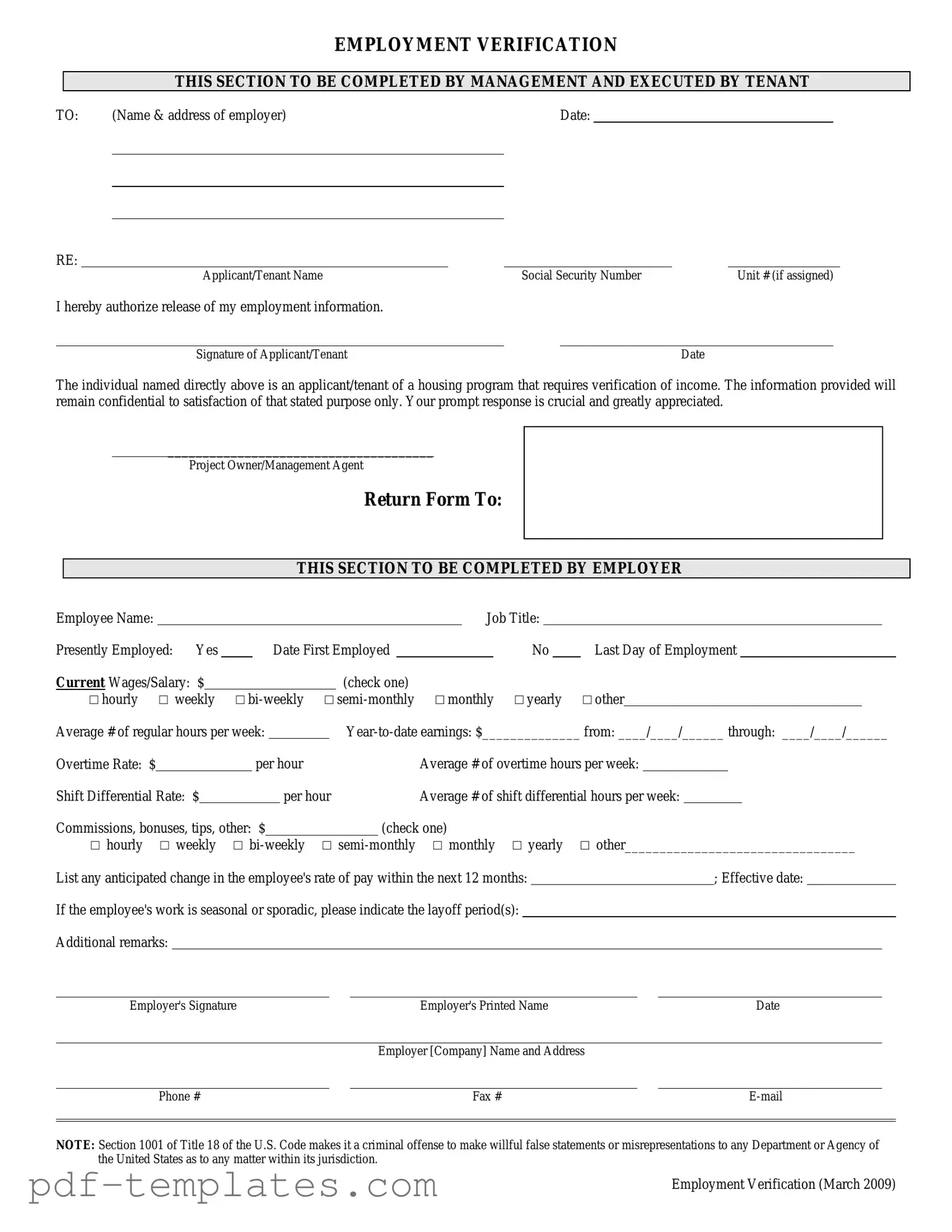The Employment Verification Letter is quite similar to the Employment Verification Form. Both documents serve the purpose of confirming an individual's employment status, but they differ slightly in format and use. An Employment Verification Letter is typically a formal letter from an employer, detailing the employee's position, duration of employment, and sometimes salary information. This letter is often requested by banks or landlords when someone is applying for a loan or a lease. While the form may be a standardized questionnaire filled out by the employer, the letter provides a more personalized and official statement of employment.
Another document that resembles the Employment Verification Form is the Reference Letter. This letter is written by a previous employer or a colleague and speaks to the employee's skills, work ethic, and character. Like the Employment Verification Form, it serves to validate the employee's professional background. However, the Reference Letter goes beyond mere verification; it offers insights into the employee's performance and contributions. This makes it a valuable tool for job seekers looking to provide potential employers with a comprehensive view of their capabilities.
The Pay Stub is another document that shares similarities with the Employment Verification Form. While the Employment Verification Form primarily confirms employment status, a Pay Stub provides tangible evidence of that employment by detailing the employee’s earnings, hours worked, and deductions. Both documents can be used to verify employment, but a Pay Stub offers a more specific snapshot of the employee's financial situation. Employers may request Pay Stubs as part of the verification process, especially when assessing an employee's income for loans or other financial commitments.
Lastly, the Job Offer Letter also has a connection to the Employment Verification Form. A Job Offer Letter is provided to a candidate once they have been selected for a position, outlining the terms of employment, including job title, salary, and start date. While the Employment Verification Form confirms that someone is currently employed, the Job Offer Letter serves as proof of an offer made to a potential employee. Both documents play crucial roles in the employment process, serving to establish and verify the employment relationship at different stages.
